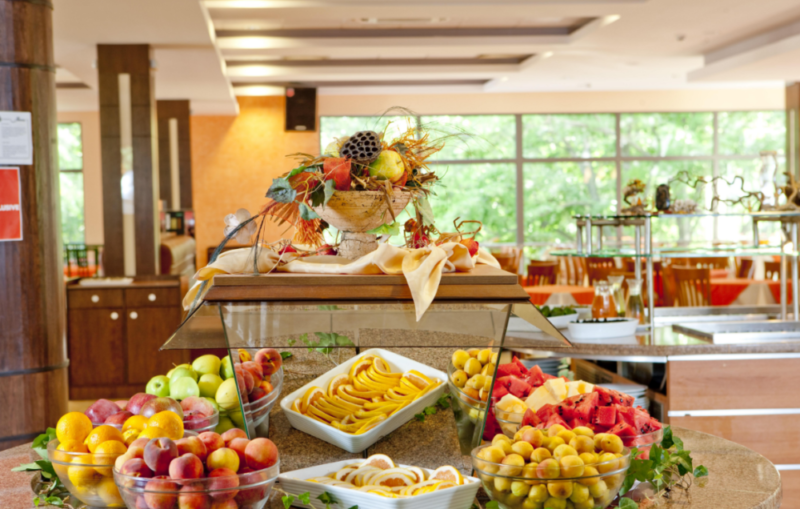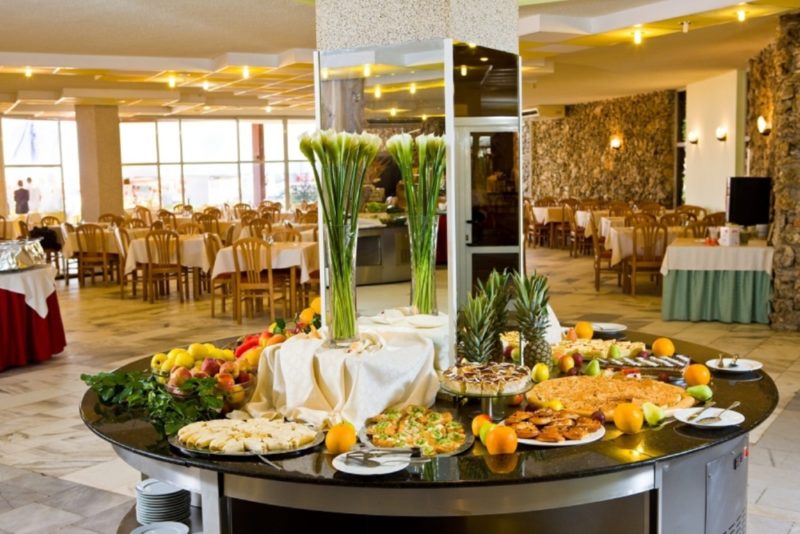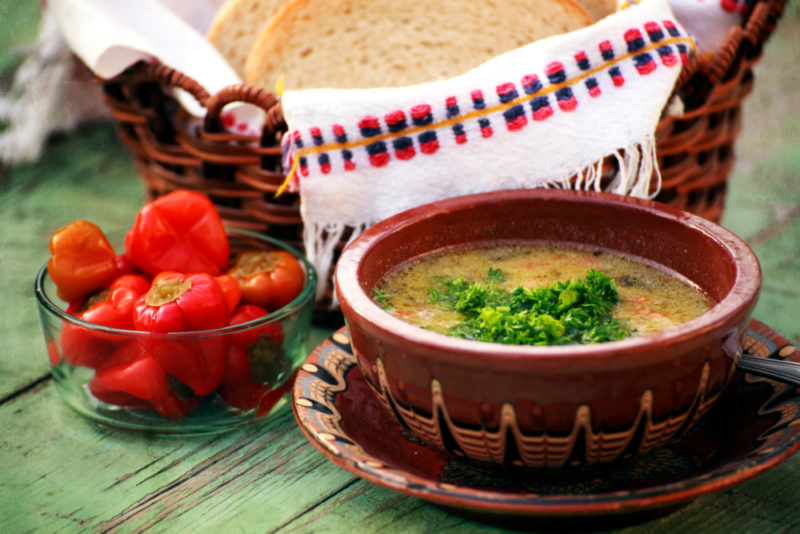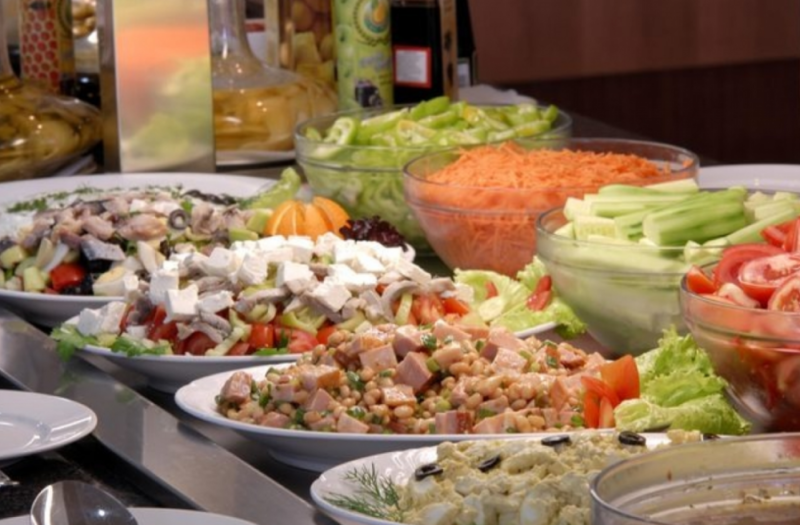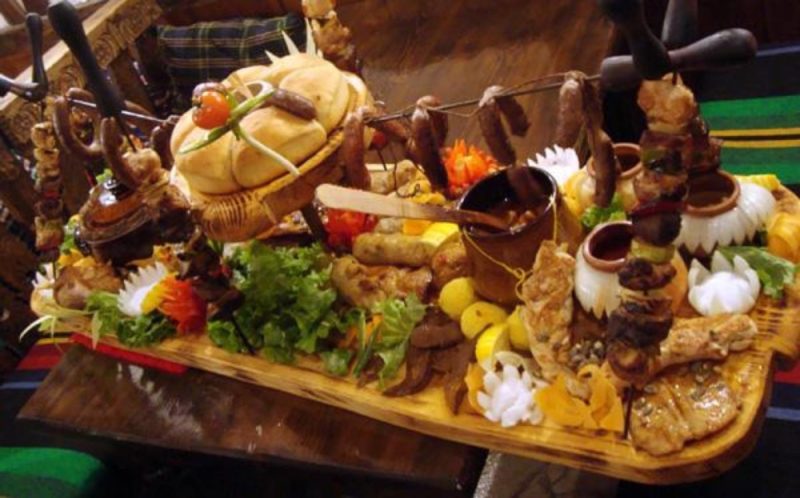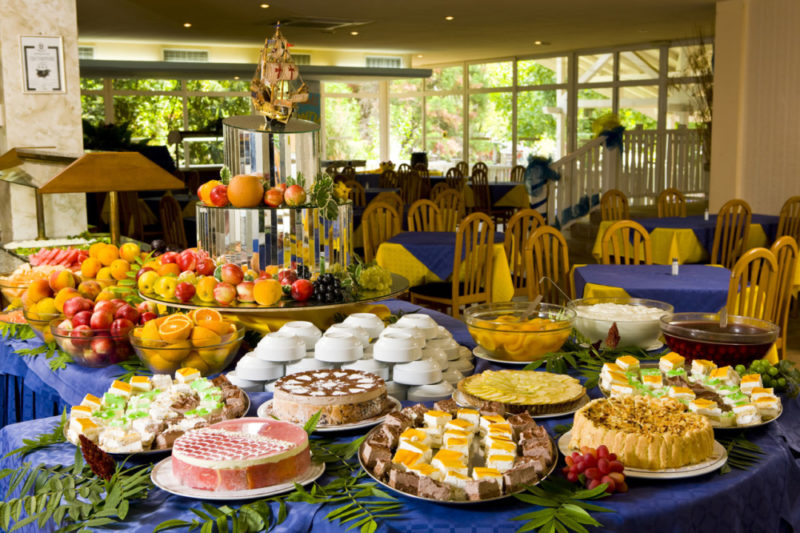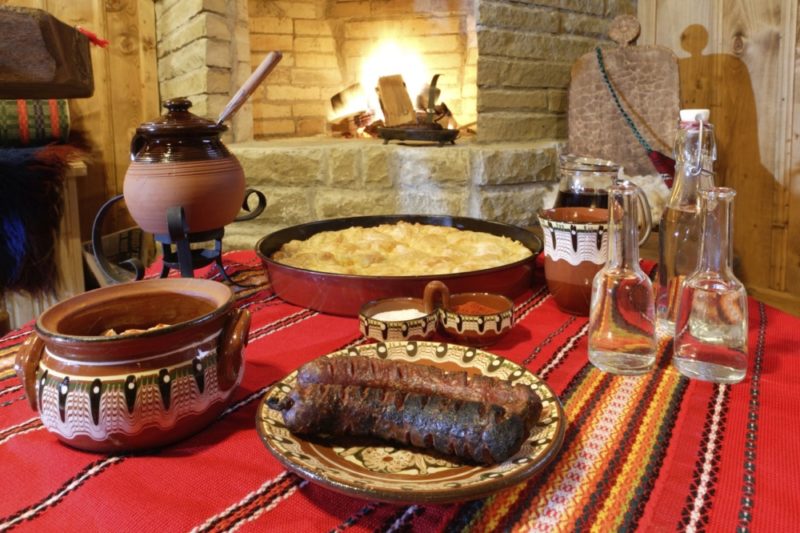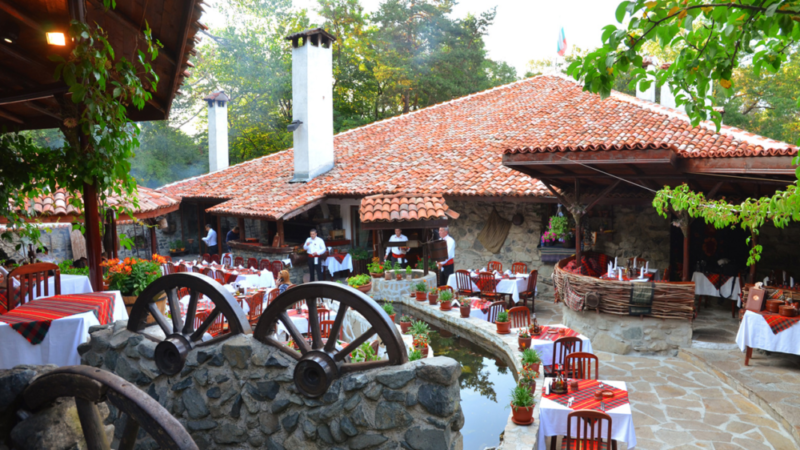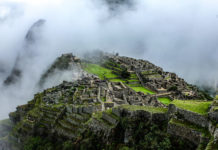Bulgarian cuisine is closely intertwined with Greek, Turkish, Armenian, Italian, Hungarian and Mediterranean. But not only the geographical location influenced this. The reason for the obvious similarity was the same type of products. Despite this, the Bulgarian chefs managed to show imagination and highlight their own subtleties and secrets of cooking.
Material Content:
Features of Bulgarian cuisine
In order to try Bulgarian meat, tourists come from all over the world. And this is justified, because the dish turns out just the most delicate, melting in your mouth. The thing is that for its preparation a special heat treatment is used, in which the product is stewed on low heat for at least an hour. An alternative to this method is meat on the grill, on the grill or on a spit. In the same way, fish is also cooked, which in its taste is many times better than dishes from a frying pan or from the oven.
Dairy products are used as marinade or the basis of many Bulgarian dishes.
Bulgarian cuisine can rightly be called rich.
This nation uses a large number of vegetables to prepare its dishes, such as:
- eggplant;
- Bell pepper;
- Tomatoes
- onion;
- carrot;
- pumpkin;
- cucumber.
In addition, Bulgarians prefer to add fruit to food. Spices and herbs also occupy not the last place in the culinary of this people. The most popular seasonings are black and red pepper, bay leaf, thyme, shalena salt, thyme, cinnamon, cloves, fenugreek, zira and others.Quite often, Bulgarian housewives prepare different mixes of spices for each individual treat.
A striking difference in the cuisine of Bulgaria is a large amount of greenery. It is used in dishes fresh, frozen or dried.
Origin history
Historically, Bulgarian cuisine embodied the culinary arts of the Balkan and Eastern countries. This situation took place because the inhabitants of all these territories constantly crossed each other with friendly or marriage ties. Representatives of the nations shared recipes for their dishes, and based on the available ingredients, each of them tried to restore a foreign dish in their kitchen.
To this day in Bulgaria preserved goodies that came from Greece, Armenia, Turkey. Especially significant influence on the traditions and customs of the Bulgarians had the last of the mentioned states. The essence of such proximity was that the heiress of Byzantium Bulgaria for a long time was under the Ottoman yoke. Local claim that some features of the national cuisine were introduced precisely by janissary cooks.
List of national dishes
The national cuisine of Bulgaria is so lush and versatile that it is impossible to describe all of its dishes. Let us try to highlight the most vivid, memorable goodies that this country may surprise.
First meal
Bulgarians prepare soups both cold and hot. The most popular first course in the summer is the tarator. It is also used in neighboring Turkey and Macedonia.
This is an analogue of Ukrainian okroshka or Greek tzadziki sauce, which includes:
- sour milk or yogurt;
- cucumber or lettuce;
- dill;
- olive oil;
- garlic;
- Walnut;
- spice;
- salt.
Some chefs pour it not into a bowl, but into a glass and serve along with the main course. Thus, the tarator becomes a cooling drink.
Bob Chorba is another famous soup of the Bulgarian people, which it is customary to cook there on Christmas Eve. The main ingredient in it is beans, preferably white. In addition, the dish contains carrots, peppers, tomatoes, various spices, onions. In order to enhance the taste, bacon, sausage or smoked meat can be added to the chorba bean.
Slightly similar to the shkembe chorba soup just described. It is prepared on the basis of a large amount of meat. It can be either beef or pork. This broth also uses milk, butter, or cream. A mixture of such spices gives a special aroma to the dish: chili pepper, red pepper, cayenne pepper, vinegar (grape or wine), garlic.
Salads and snacks
The warm climate and fertile land caused a large number of vegetables and greens in the dishes of Bulgaria.
The most popular of the local salads is Shopsky. There are several variations of the recipe, but mainly sweet pepper, tomato, onion, cucumber, parsley are mixed for its preparation. A mixture of olive oil and vinegar is used as a dressing, and grated feta cheese is sprinkled on top of the dish.
Similar to Shopsky, but more satisfying Ovcharsky salad contains all the same components as its vegetable counterpart. But in the second version, there is also ham, boiled eggs and Bulgarian cheese Kashkaval, sometimes even pickled mushrooms. Its name translates as "shepherd."
What-what, and the Bulgarians prepare excellent snacks. What is onion worth - a dry-cured sausage, the name of which comes from one of its components - onions. Minced pork stuffed with a lot of spices stuffed gut. Sausage drying takes place under strict control from three to nine weeks. The temperature and humidity should not change. To form the correct shape, the sausage is pressed several times. Serve such a delicacy in thinly sliced slices like carpaccio.
From vegetable snacks in Bulgaria like eggplant caviar. The recipe is extremely simple, but the taste is excellent.For cooking, the cooks themselves take grilled vegetables, vegetable oil, spices, vinegar, garlic, parsley. All grind to a state of gruel. Such a treat is served along with boiled eggs and a tomato.
Traditional main dishes
Traditional dishes in Bulgaria are mostly prepared with meat and are considered festive.
Lanny cake Bannitsa is considered almost sacred.
In the process of cooking, thin rolls with filling are rolled out of the dough, which are laid out in the form of a spiral or round. A pan or wedge is most often used as a form.
In addition to minced meat, this baked goods may contain such products:
- hard cheese;
- cottage cheese;
- vegetables (spinach, cabbage, onions);
- fruits.
No triumph passes without this nourishing treat. He is placed at the center of the table on New Year's, Easter and Christmas. For convenience, Bulgarian confectioners even created frozen billets of Bannitsa, which can be found in supermarkets.
Musaka is a dish of the Middle East and the Balkans, as well as a longtime solemn meal of the Bulgarians. This casserole consists of three layers: minced meat, potatoes and pouring. A similar dish is also prepared with the addition of vegetables, but then it is called "guvet".
Dessert
Many Bulgarian desserts are borrowed from neighboring states, such as Turkey. Such oriental sweetness as Turkish delight did not leave Bulgarian cooks indifferent and they began to cook it at home. This dish has two modifications: soft fruit candies (Turkish delight) or flour products (Turkish delight).
Another migrated dessert is halva. It is prepared on the basis of caramel mixture and roasted nuts. Sometimes they are replaced with peanuts, sunflowers or sesame seeds. Such a delicacy is quite high-calorie. Mass fraction of fat is 25% or more.
To give different shades, such products as vanilla, cocoa, pistachios, chocolate, honey can be added to halva.
Baklava is also popular, or as we used to call it “baklava”. Many eastern peoples prepare such a sweetness. In fact, baklava is a lot of layers of thin dough with honey and nuts (walnuts, almonds, pistachios). As in other Bulgarian desserts, spices are used in making baklava, for example, cinnamon, cloves, as well as lemon juice and pink water.
Beverages
Of the diet drinks in Bulgaria, yogurt is popular. Traditionally, this fermented milk product is prepared only from milk and sourdough. Berries, fruits or cereals can serve as additives for such a dessert. It can be either a separate drink or a salad dressing.
On the basis of yogurt, they prepare some sauces for meat and fish, as well as the famous Ayran. Salt and chopped greens are also used for cooking. Such a drink is used chilled, therefore it quenches thirst well. Instead of yogurt, katyk, kefir, and rounds can be taken as a basis.
And what to try in Bulgaria from alcohol?
Among the popular spirits:
- mastic;
- cop;
- bose
- rakia;
- pelin;
- Wines (Mavrud, Pamid, Hamza, Dimiat, Misket, Muscat, Pelinkovac).
The strongest are mastic and rakia (more than 40% alcohol). The first is prepared from aniseed extracts, and the second - from grapes, plums or apricots.
Restaurants and cafes of Bulgarian cuisine
In order to learn the intricacies of true Bulgarian cuisine, it is worth visiting one of the national restaurants in Sofia. Each of them adheres to its own concept, but nevertheless, the basic rule remains unchanged: the guest must leave well-fed, satisfied and with the desire to return to this place more than once.
To raise the mood of visitors, the popular restaurant Manastirska Magernitsa Restaurant made an unusual decision. Its menu is not just an ordinary list of dishes, but a real collection of jokes and poems. Creatively approached the design in Hadjidraganovite kashti. The interior is decorated in accordance with all the traditions of the ancestors, and the menu is translated into English for the convenience of tourists. Among other things, the restaurant has reasonable prices and helpful staff.
Bulgarian dishes are also popular outside this country. Quite successful institutions were built in Moscow, Odessa, St. Petersburg. Noteworthy are the restaurants "Baba Marta", "Four Bulgarian", "Meihan" and "Bulgar".
Having become acquainted with the features of Bulgarian cuisine, you can forever remain its admirer. Dishes of this people fall in love with themselves with generosity of taste and subtlety of aroma, because the main ingredient that Bulgarian cooks put into all dishes is the soul.



